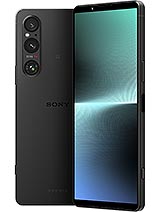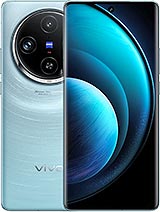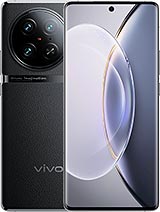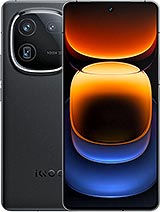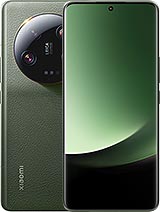vivo X100 Pro review

Super-bright high-res 6.78-inch OLED
The X100 Pro rocks a 6.78-inch OLED display - the same diagonal as on the previous model. The resolution also remains unchanged at the somewhat unusual 1,260x2,800px that makes for a pixel density of 452ppi.
Being an LTPO panel, its refresh rate is continuously adaptive and ranges between 1Hz and 120Hz. High-frequency pulse width modulation (PWM) at 2160Hz is used for dimming. HDR10 and HDR10+ are supported and the 10-bit color depth means the phone can display over a billion colors.

The official promo materials promise up to 3,000nits of peak brightness, in a use case we can't really test. We did measure 1,472nits in our standardized test with the phone placed under bright light and adaptive brightness enabled - a bit shy of the best, still higher than most. With adaptive brightness turned off, we got 575nits - a fairly standard value.
Refresh rate
The X100 Pro has three refresh rate modes - the default Smart Switch, High, and Standard. Neither of the 'fixed' modes is actually fixed and in all three modes the phone will switch down to 1Hz when idling. The Standard mode will impose a 60Hz ceiling, while both the Smart Switch and High modes will behave similarly in their adaptiveness, readily switching down to 60Hz in browsers and such, and to 1Hz when there's no moving content or interaction with the display.

Intermediate steps at 30, 36, 72, and 90Hz were also observed, but no 24fps or 48fps were reported. Then again, 48fps video content appeared smooth and went with a constantly alternating value between 36 and 72Hz, so it could very well be an imperfection in reporting. High mode was more reliable in allowing 120Hz in games, while Smart Switch would often cap them at 60Hz.
Streaming and HDR
The vivo X100 Pro supports HDR10 and HDR10+, but no Dolby Vision. We got HDR streams to work in YouTube and Netflix alike. There's also support for displaying HDR images in the gallery with enhanced tone mapping and a highlights brightness boost - Android 14's Ultra HDR capability is making its way to more devices.
vivo X100 Pro battery life
One of the more significant generational upgrades is the increase in battery capacity to 5,400mAh - up from the X90 Pro's 4,870mAh. It's what we'd call an unusually high figure in a sea of 5,000mAh competitors, though the somewhat related iQOO 12 Pro does feature the same battery capacity.
The extra mAhs do appear to be doing their job - we clocked some excellent numbers on the X100 Pro in our Active Use tests. If we take the iPhone 15 Pro Max out of the equation, the vivo posted class-leading results in the screen-on disciplines with the 12:25h on our web browsing script and nearly 9 hours of gaming being standout achievements.
Charging speed
The X100 Pro comes with an adapter that's rated for 120W of charging power, while the phone itself should be capable of up to 100W according to its specs. In practice, we saw readings up to 84-ish watts on our power meter in the early stages of the charging process - up to around 6% state of charge, which was followed by a gradual decline, all as expected.

Using this bundled adapter, we a full charge from flat requires 31 minutes and change. 15 minutes into it, we were looking at 60% in the battery indicator, and we more or less matched vivo's promised 50% in 14 minutes.
The X100 Pro is a bit of a downgrade compared to the X90 Pro in terms of absolute speed, but let's keep in mind the increased capacity of the new model. In any case though, the phone won't be keeping you tied to the wall all too long.
Speaker test
The vivo X100 Pro is rocking a fairly standard hybrid stereo speaker system with a primary bottom firing unit and another one up top that's directed forward and also serves as the earpiece. Each speaker only plays its own channel and that means left for the earpiece when the phone is held vertically and dynamic adjustment in landscape depending on the handset's orientation.


Top speaker (also an earpiece) • Bottom speaker
The X100 Pro earned a 'Very Good' rating for loudness in our testing, on par with the previous generation and most competitors. Its sound quality is solid without being outstanding - frequency response is balanced, vocals are well defined, treble is clean. The Galaxy S23 Ultra does deliver a bit more bass though.
Use the Playback controls to listen to the phone sample recordings (best use headphones). We measure the average loudness of the speakers in LUFS. A lower absolute value means a louder sound. A look at the frequency response chart will tell you how far off the ideal "0db" flat line is the reproduction of the bass, treble, and mid frequencies. You can add more phones to compare how they differ. The scores and ratings are not comparable with our older loudspeaker test. Learn more about how we test here.
Reader comments
- Chunmaru
- 22 Oct 2024
- t7W
Can't find any compatible game trigger/controller just because of the camera bump at the back 😔
- AnonD-1105399
- 08 Sep 2024
- X@B
I still use it and really liking this device, I used s23U prior to this. - Build quality is better than galay ultra series and I feel its solid whenever hold in hand - Camera is obviously better mainly in portraits - bugs - never saw even s...
- AnonD-1105399
- 08 Sep 2024
- X@B
I still use it and really liking this device, I used s23U prior to this. - Build quality is better than galay ultra series and I feel its solid whenever hold in hand - Camera is obviously better mainly in portraits - bugs - never saw even s...




